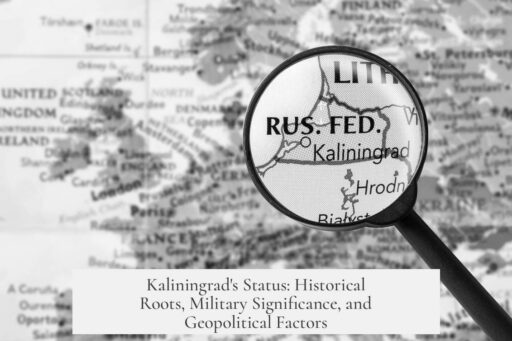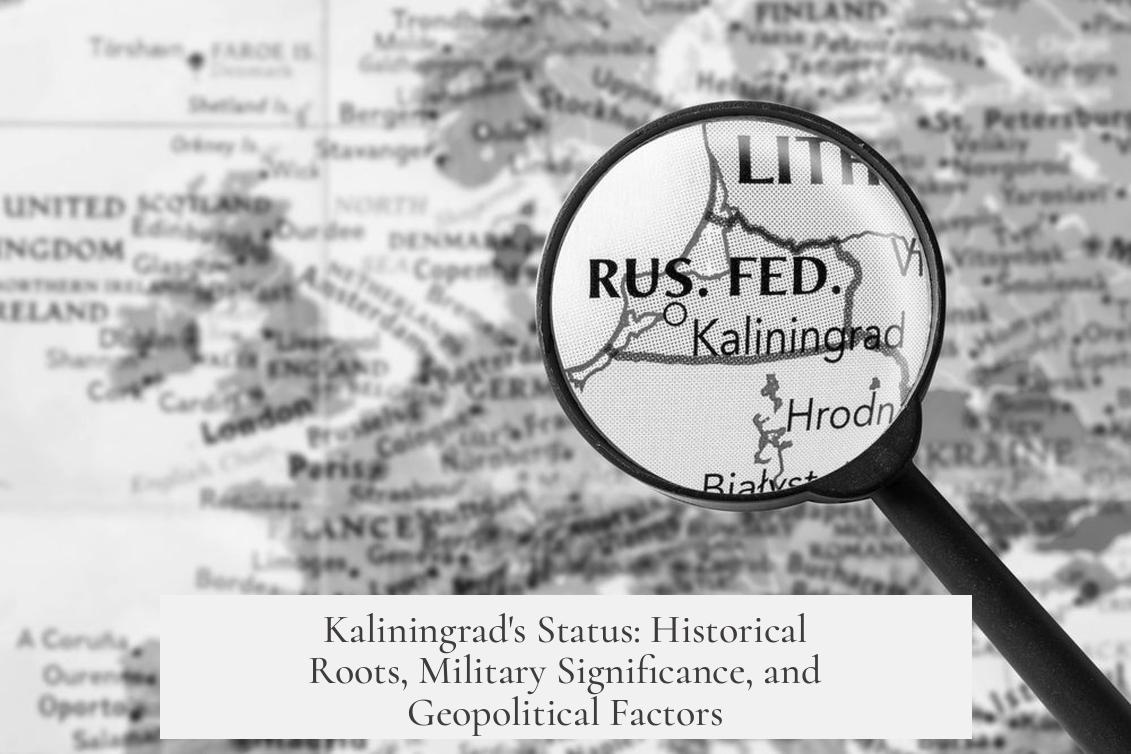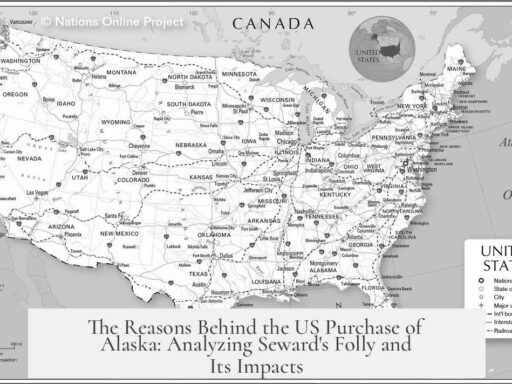Kaliningrad belongs to Russia due to a combination of historical claims, strategic importance, and post-war political decisions primarily made by the Soviet Union. After World War II, the Soviet leadership, led by Joseph Stalin, prioritized acquiring Königsberg (now Kaliningrad) because it provided an ice-free winter port on the Baltic Sea, crucial for Soviet naval power.
Stalin justified this annexation based on claims that the area was ancient Slavic land, making it naturally part of the Soviet Union. He also emphasized the bloodshed of Soviet troops who liberated the area from German control during the war. Stalin firmly rejected Western proposals for an Allied occupation or German administration of the region, insisting that it remained under Soviet control.
Following occupation, the Soviet Union expelled the remaining German population, fearing they could act as a fifth column in this strategically critical zone. Soviet settlers, mainly ethnic Russians, replaced the Germans, further integrating the region into the Soviet state. Kaliningrad thus became a separate oblast within the Russian Soviet Federative Socialist Republic rather than part of Lithuania or Poland. This was motivated by security concerns, as Kaliningrad housed the Soviet Baltic Fleet and Stalin wished to control its military facilities without interference from the newly formed Lithuanian SSR.
When Germany reunified in 1990-91, it formally renounced any territorial claims to Kaliningrad through the 2 + 4 agreement, which settled the final borders of Germany. Neither Poland nor Lithuania pursued any claims to Kaliningrad because the area’s population had changed dramatically and no ethnic basis supported such claims. German Chancellor Helmut Kohl prioritized German unity over the reclamation of lost territories, aligning with international agreements and strategic realities.
| Reason for Kaliningrad’s Russian Status | Details |
|---|---|
| Historical Claims | Stalin’s claim of ancient Slavic roots and Soviet liberation of the land |
| Strategic Importance | Ice-free port, Soviet Baltic Fleet base, military security reasons |
| Population Shift | Expulsion of Germans, resettlement by ethnic Russians |
| Post-War Politics | Rejection of Allied/German administration, formal renunciation by Germany |
- Kaliningrad’s annexation was driven by strategic needs and historical claims asserted by Stalin.
- The Soviet Union expelled Germans and resettled Russians to secure the territory.
- Germany formally renounced claims during reunification negotiations.
- Neighboring countries have no strong ethnic claims due to population changes.
Why Does Kaliningrad Belong to Russia?
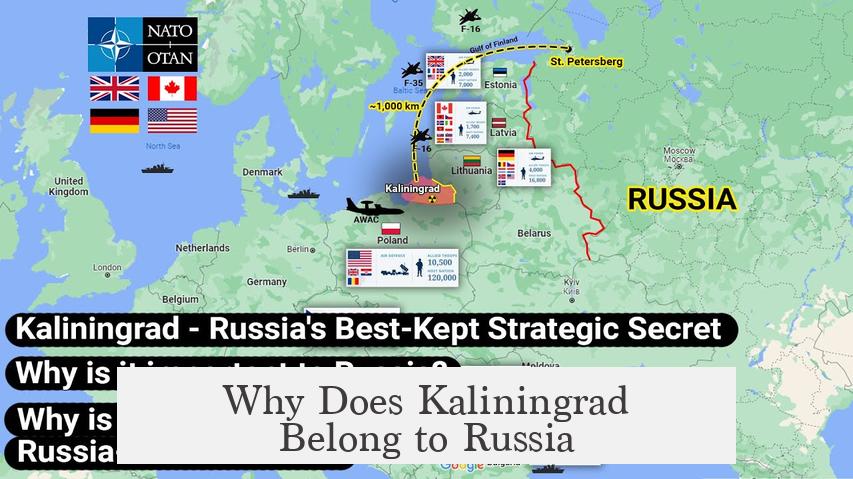
Kaliningrad belongs to Russia primarily because of strategic military interests, historical claims asserted by Stalin, other post-war agreements, and demographic shifts that made it distinctly Soviet territory by the end of the 20th century. Let’s unpack why this tiny Russian exclave sits like a Baltic jewel on the map, nestled between Poland and Lithuania, and why it remains under Russian control today.
Kaliningrad’s story isn’t just about land; it’s about centuries of changing borders, world wars, and post-war diplomacy bouncing across Europe like a geopolitical pinball. But first—ever wondered why Stalin, the iron-fisted Soviet leader, decided that this patch of East Prussia was essential? The answer lies in ice-free ports and deep-seated claims rooted in history and bloodshed.
Stalin’s Strategic Vision and Historical Justification
When Stalin planned the post-World War II map, he had his eyes set on Königsberg, now Kaliningrad. Why? The Soviet Union desperately needed an ice-free port on the Baltic Sea to maintain naval and commercial access year-round. Other Soviet Baltic ports froze over in winter, limiting operations. Kaliningrad offered a valuable gateway to the West as it remained navigable.
Stalin also made a case based on “ancient Slavic soil,” arguing that this territory naturally belonged to the Soviets. While historians might poke holes in this claim, at the Potsdam Conference, Stalin insisted East Prussia had long Slavic connections that justified its Soviet annexation. This was a clever mix of historical narrative and realpolitik.
Beyond historical claims, Stalin pointed to the blood spilled by Soviet soldiers liberating the area from Nazi Germany. This emotional and moral weight bolstered their claim; after all, liberators tend to want to keep what they fought for.
Post-War Disputes and Soviet Determination
At first, Western Allies like Truman and Churchill entertained the idea of some joint administration over East Prussia. They proposed an Allied occupation or even a temporary German administration. But Stalin drew a firm line: no Germans govern here, no Western interference allowed. The Soviet Union was ready to throw out any provisional German rule and take full control.
Stalin’s firmness shaped the final map: the southern parts of East Prussia went to Poland and the Lithuanian SSR. But Kaliningrad was treated differently—it became a separate oblast and part of the Russian Soviet Federative Socialist Republic (RSFSR), not Lithuania. The reason? Security above all else. Stalin distrusted newly formed Lithuanian SSR authorities and wanted this critical military zone under direct Russian control.
Military Security and Population Changes
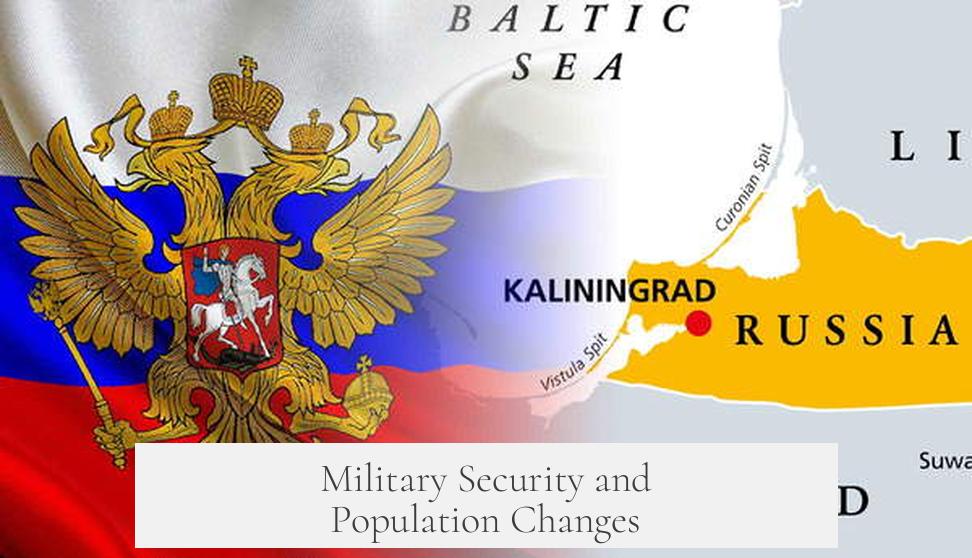
Kaliningrad quickly became a military pivot point. The Soviet Baltic Fleet found its home here, reinforcing the region’s strategic importance for Moscow. But with military importance came harsh security measures.
The German population living there was viewed as a risk—a potential “fifth column” in a Cold War hotspot. So, starting in 1947, the Soviet Union expelled most of the German inhabitants. In came Soviet settlers, mainly ethnic Russians. This population shift transformed Kaliningrad’s demographic landscape, rooting it firmly in Soviet culture, not German.
Why Does Kaliningrad Belong to Russia Today?
Fast forward to 1991: around the time the Soviet Union collapsed, Kaliningrad’s original German population had all but vanished. Its people were now mostly Russian, unlike neighboring Poland and Lithuania, where different ethnic groups lived. This ethnic reality meant there was little basis for Poland or Lithuania to claim Kaliningrad as their own.
Moreover, Germany itself renounced any territorial claims on Kaliningrad as part of the historic 2 + 4 Agreement signed by East and West Germany with the Allied powers in 1990. This agreement finalized German reunification but also stated that Germany would not contest borders established after WWII. Chancellor Helmut Kohl understood that demanding Kaliningrad back would stall reunification and deepen tensions in Europe. Wise choice, considering the geopolitical complexity.
So, the pieces fell into place: Kaliningrad’s Soviet-era transformation, strategic military value, its Russian ethnic population, and the lack of legal claims from Germany, Poland, or Lithuania cemented its status as Russian territory.
What’s the Bigger Picture?
The Kaliningrad case shows how history, military strategy, and demographics intertwine in border decisions. Did Stalin’s ice-free port dream come true? Yes. Does Kaliningrad remain a strategic outpost today? Absolutely. Think of it as Russia’s Baltic “chess piece,” a non-contiguous yet invaluable part of the Russian Federation with unique geopolitical leverage.
Can Kaliningrad ever belong to a different nation? Given the current demographics and political realities, it’s unlikely. However, the area remains a flashpoint in East-West relations and reminds us how the echoes of World War II still reverberate in unexpected ways.
Practical Lessons from Kaliningrad
- If you want to hold a territory, controlling its population is crucial. Changing ethnic compositions can cement or unravel sovereignty claims.
- Strategic military needs often drive territorial decisions more than pure ethnic or historical claims.
- International agreements, like the 2 + 4 treaty, show how political will can shape and finalize borders once considered questionable or temporary.
Kaliningrad’s story combines careful planning, military strength, and diplomatic maneuvering. It’s a reminder that borders are living, often contested lines shaped by power struggles, population shifts, and pragmatic statecraft—not just dashed lines on a map.
